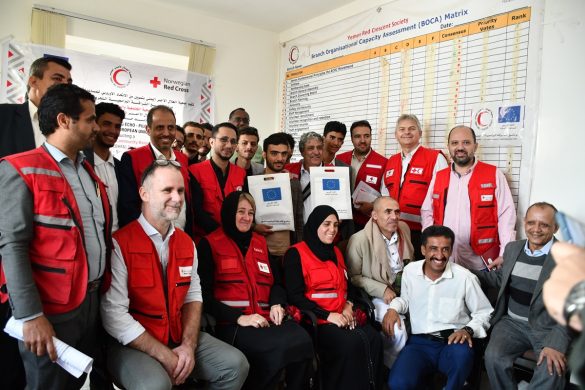Sundhedsmyndigheder er bekymrede over en dødelig influenza-virus, der har spredt sig fra Saudi-Arabien og videre til Asien og USA. Mange nye tilfælde er konstateret i de seneste tre uger, og det skaber bekymring for, at det kan udvikle sig til en pandemi.
DUBAI, 5 May 2014 (IRIN) – Health authorities around the world are on high alert after a sudden spike in the incidence of a deadly Middle Eastern flu bug that began in Saudi Arabia but has now spread to Asia and the USA.
As of 4 May, the Kingdom had recorded 411 cases of Middle East Respiratory Syndrome Coronavirus (MERS-CoV) and 112 deaths in two years.
Almost a third of these cases have emerged in the past two weeks, the biggest single surge of MERS-CoV since it was discovered in April 2012, prompting questions about whether the virus has the potential to escalate into a pandemic similar to Severe Acute Respiratory Syndrome (SARS), which swept through Asia in 2002-3, killing over 700 people.
Beyond Saudi Arabia the virus has a significant caseload in the United Arab Emirates (UAE) and in the past week other cases have been discovered in the US, Greece and Egypt for the first time, with 12 countries in total now affected.
“This is a key moment in the MERS-CoV timeline,” Sofian Ragab research director at IDPH Research Group, a London-based but Middle East and North Africa-focused think tank, told IRIN. “Unless it is brought under control and kept that way, we could see an exponential increase in incidence.”
Ragab, who has been mapping MERS-CoV since it first appeared, noted that while the “pandemic potential” remained “low”, he said: “We still have to be concerned, and infection prevention and control measures should be implemented and maintained.”
The good news is that so far the genome structure of MERS-CoV does not appear to be mutating as it passes from person to person, unlike SARS, which makes it less virulent and unpredictable, and easier to treat.
But while several studies have identified camels to be the likely source of MERS-CoV, scientists remain unsure about how the virus is moving from animals to humans.
“Until we better understand how the virus transmits from camels or the environment to a human, we are likely to see more cases,” said Jaouad Mahjour, director of the Department for Communicable Diseases at the World Health Organization (WHO)’s Eastern Mediterranean Regional Office (EMRO) in Cairo.
Mahjour, a medical doctor who has just led a WHO fact-finding and risk assessment mission to Saudi Arabia, added: “Understanding this link is key to limiting the outbreak. There is an urgent need to conduct an in-depth epidemiological study of known cases to get this knowledge.”
Two weeks on a ventilator
Forty-seven-year-old Saudi consultant Ismael Qushmaq, one of a number of healthcare workers to be infected with the virus in the Kingdom in the past month, is recovering after two weeks on a ventilator in the ICU department he runs at King Faisal Specialist Hospital and Research Center in Jeddah.
His sister, Nahid Qushmaq, who works as a doctor in infection control at another hospital in the city, told IRIN that her brother had been exposed to MERS in early April while treating a patient, who it later turned out had the disease despite having atypical symptoms.
“It’s important that we control this as soon as possible. It’s not a chronic disease, it’s an acute infection of the respiratory system and it can be contained,” she said.
Some parents in Saudi Arabia have called for schools to close early for summer due fears of an outbreak, but Qushmaq said she was still sending her children to class because she was confident that adequate surveillance measures were in place.
“People are obviously concerned and are asking a lot of questions”, she said. “But… I wouldn’t say there has been a lot of panic, not as much as I thought there would be. People are still going about their lives, though you do see some people in masks in shopping malls and other crowded areas.”
Improved response
Læs hele artiklen her: http://www.irinnews.org/report/100038/alert-over-spike-in-middle-east-flu-virus














